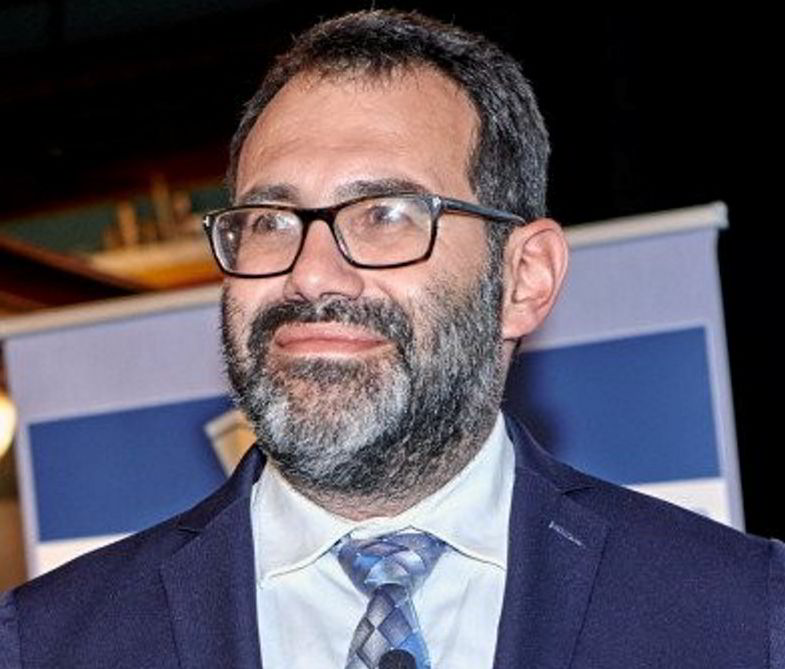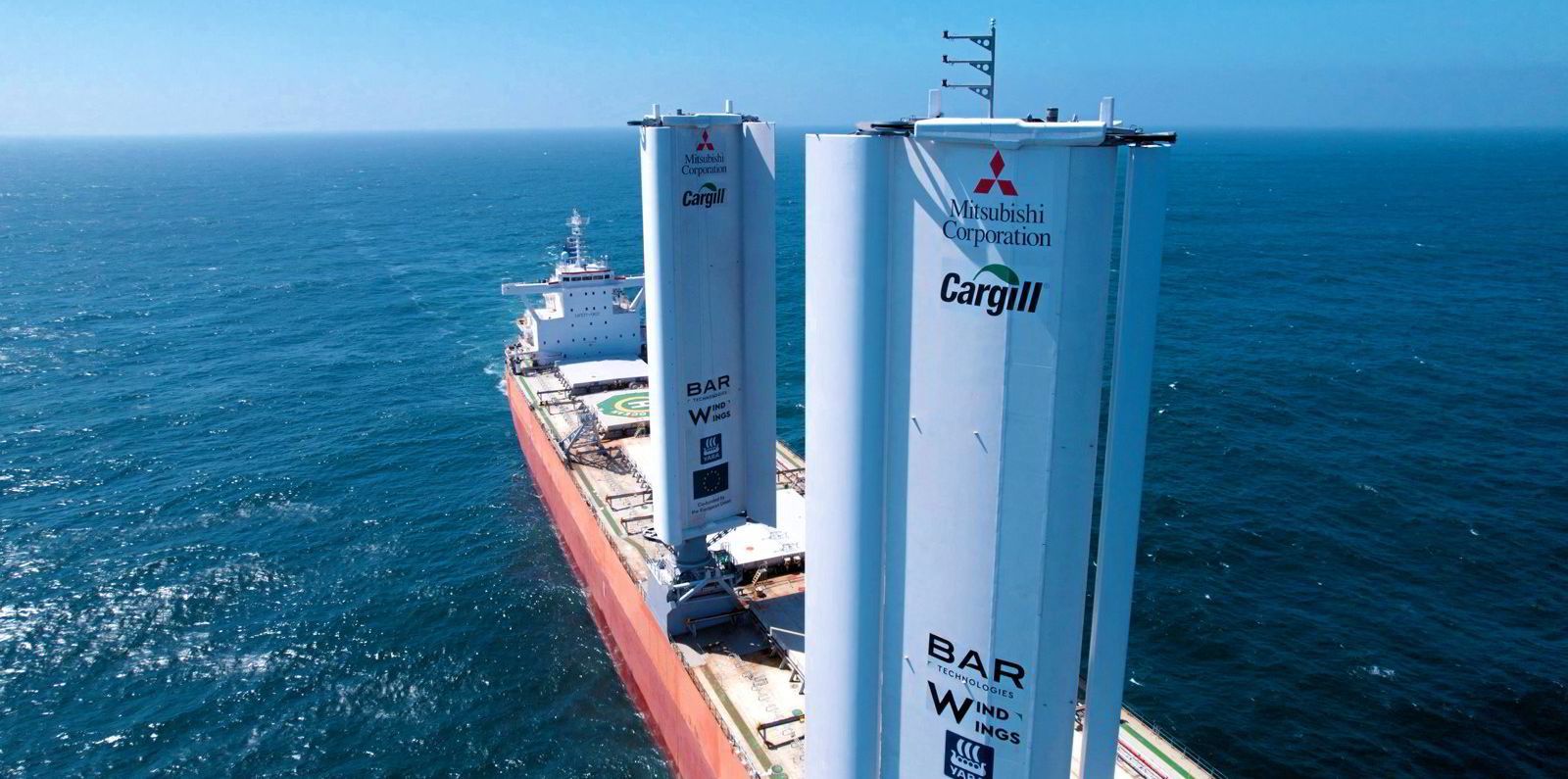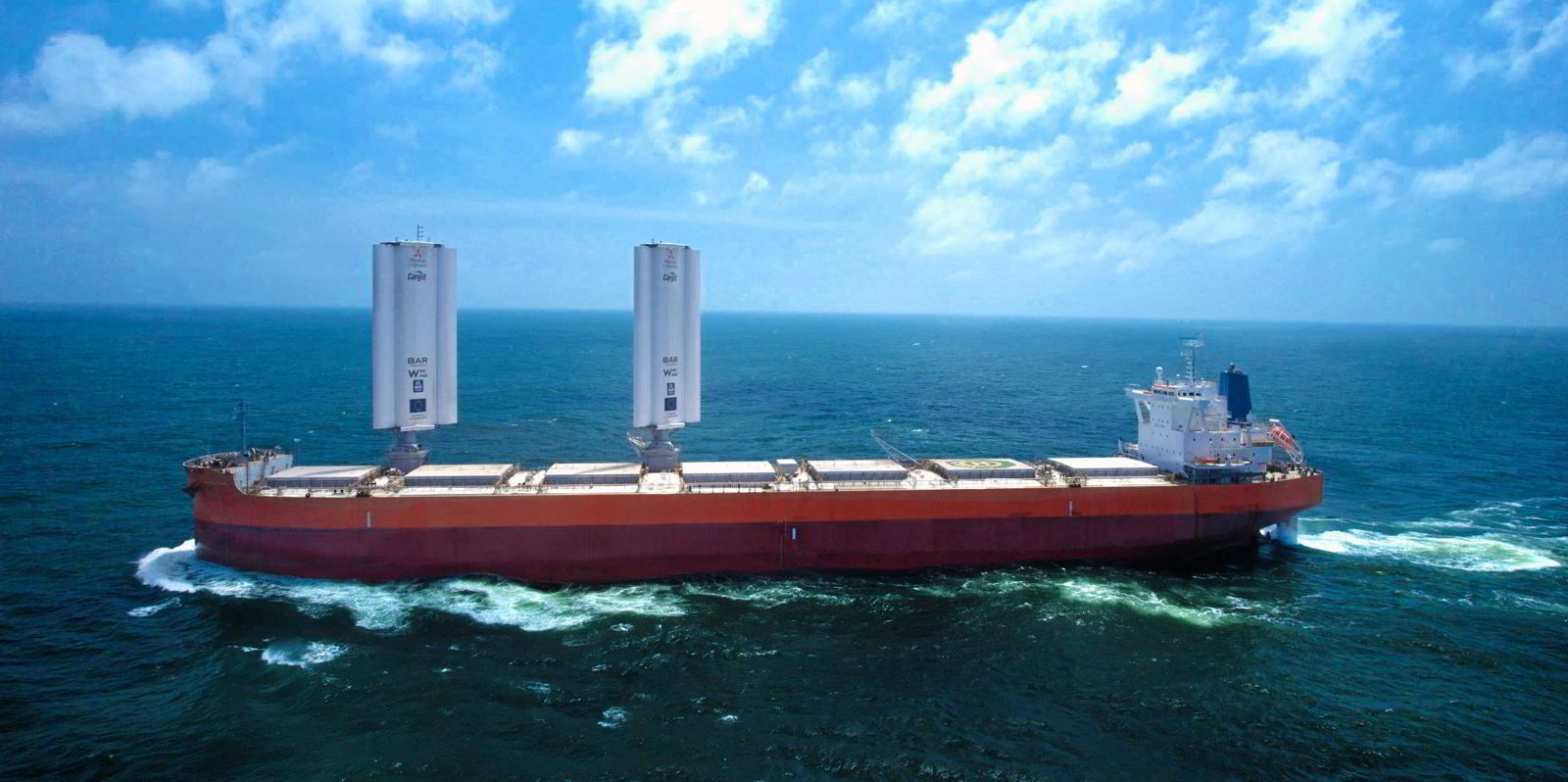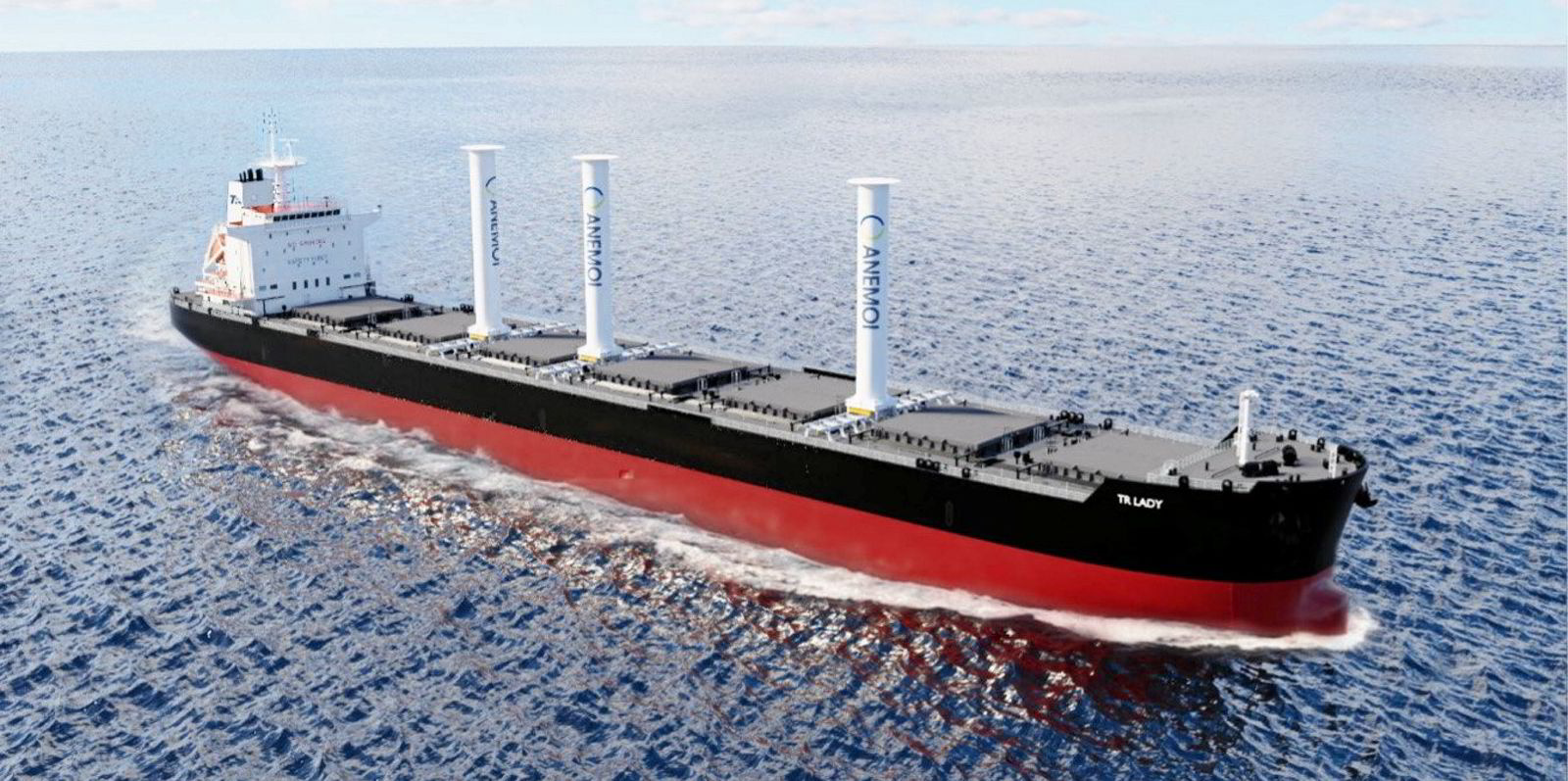The glass-half-full view of wind propulsion is this: The fleet of ships using this technology is growing rapidly.

But there is a glass-half-empty view: Despite that growth, the number of ships on the water with wind propulsion or assistance is a tiny fraction of the global fleet.
To meet the new greenhouse gas goals of the International Maritime Organization, or the more ambitious targets required to align shipping with the Paris Agreement’s goals, wind power has enormous potential.
But it will need the aid of regulators to create the conditions that will ramp up investment in the technology, as well as a major mindset change in the way shipping’s commercial structures work to overcome the friction that prevents adoption.
As TradeWinds reported this week, a kamsarmax bulker chartered by US-headquartered commodities giant Cargill and owned by Tokyo-based Mitsubishi Corp now features two WindWings sails designed by BAR Technologies.
This is significant because one of the world’s largest charter operators, in the form of Geneva-based Cargill Ocean Transportation, and Japan’s largest trading house are invested in the potential of the technology.
But note that they are doing so by leapfrogging existing options to test new technology, a reflection of a sector that is rapidly advancing but that is not catching on in the way, for example, methanol fuelling has in the last year.
Yet a recent report by Dutch consultancy CE Delft shows wind’s potential to solve what may be the greatest challenge facing shipping: tackling the greenhouse gas footprint of an industry that, for important reasons, has been hooked on fossil fuels since it abandoned wind propulsion more than a century ago.

Exploring a question posed by a coalition of environmental groups, CE Delft looked at a combination of wind-assisted propulsion, reducing speeds by 20% to 30%, and deriving 5% to 10% of shipping’s energy from zero-greenhouse gas fuels.
And the research house found that, with this trifecta, shipping’s emissions could be slashed by 28% to 47% by 2030, compared to 2008 levels.
That puts the IMO’s 2030 “indicative checkpoint” of 20% to 30% cuts within reach, as well as the more ambitious 40% cut of the Science Based Targets initiative, a private sector effort to certify companies’ goals adherence to the Paris Agreement’s aim of halting global warming at 1.5C.
And yet, there are just 30 large vessels with wind-assisted propulsion, in addition to 10 cruise ships with traditional sail riggings, according to International Windship Association secretary general Gavin Allwright.
Another 16 to 17 wind-assisted ships are expected by the end of the year, although some of those installations may take place in early 2024, and at least another 38 installations are planned for next year, he said.
What does wind-assisted propulsion need to take off?

Allwright said that his association’s primary area of policy advocacy is a call for wind to be treated as an energy source on par with fuel.
Wind assistance is often thought of as a fuel-saving technology, but it is actually adding to a ship’s propulsion. That is increasingly being accepted at the IMO, where it is listed as fuel in key policy documents, but there is more work to be done.
The issue is more than a semantic difference.
Placing a price on shipping carbon, which is under discussion at the IMO and is already set to happen starting next year within the European Union, will also enhance the return on investment for wind, especially if the price to pollute is set at meaningful levels.
But placing it on equal footing with low and zero-emission fuels is also key to ensuring revenue from a fuel levy or the EU Emissions Trading System is used to advance wind propulsion technologies and support their adoption by shipping companies.
“If wind is excluded from the energy source analysis, pretty much all the regulation subsidies, the raising of funds through levees and the allocation of that funding will be based on fuel options,” Allwright said.
And in the future, shipowners will not be choosing between wind and alternative fuels. By reducing fuel consumption, wind will also help make it cheaper to use those more expensive alternatives.
But wind propulsion also runs up against a challenge that is found throughout the decarbonisation discussion. The shipping industry’s long-held commercial structures can work against its widespread adoption.
To optimise how a vessel trades for wind will involve sailing it in new ways, as Cargill Ocean Transportation president Jan Dieleman explained to TradeWinds.
The split incentives of shipping contracts that give charterers the benefits of fuel savings mean shipowners need a strong signal from commercial operators and cargo interests that there is demand for wind-assisted vessels. And contracts need to incentivise those fuel savings rather than encourage “hurry up and wait” sailing.
_______________
Racing to emissions cuts: A tech firm with a sporting pedigree has put wind in Cargill’s new sails
Wind is free, it’s abundant and it powered shipping for thousands of years before the industry first got hooked on fossil fuels.
But when agricultural giant Cargill and BAR Technologies started working together on wind-assisted propulsion, they sought out to reinvent the sail.
UK-based BAR’s chief executive John Cooper said Cargill asked his technology company, which was founded in 2016 by members of the British team in the America’s Cup sailing competition, to use its simulation methods to study a variety of options to bring wind propulsion to its ships.
“We gave them an honest appraisal. And they said, ‘Could you invent one?’” Cooper said. “We said, ‘yes’, and WindWings was born.”
A Cargill-chartered kamsarmax bulker has now set sail after the installation of two WindWings sails that the two companies expect to yield significant fuel savings at a time when shipping companies are exploring a plethora of technologies to harness the wind to tackle greenhouse gas emissions.
_______________
As Washington celebrates law offering climate dollars, shipping has yet to apply
The Biden Administration has been celebrating the one-year anniversary of the Inflation Reduction Act, the US law that included some $783bn in spending on green energy and climate change.
But the legislation, as well as other moves by Washington to open America’s wallet for decarbonisation, has yet to make its way to tackle shipping’s greenhouse gas emissions, at least not directly and not yet.
Sean Pribyl, a Washington DC-based lawyer for Holland & Knight who focuses on maritime and energy matters, told the Green Seas podcast that the US government has unleashed a large sum of money for decarbonisation and that the White House has made it clear that it wants shipping to be included.
But his firm and the Blue Sky Maritime Coalition, an industry group aimed at pursuing decarbonisation of the sector, are seeking language in the legislation that is fit for shipping.
Click here to read the story or listen to the episode.
_______________
Odfjell to trial air lubrication and suction sails on its chemical tankers
Dale Wainwright reports that Odfjell is to trial two new green technologies over the next 12 months as it looks to improve fuel efficiency and reduce its carbon footprint.
The chemical tanker owner said it will install an air lubrication system on one pilot vessel in the second half of this year, which it hopes will reduce CO2 emissions by 6% to 8%.
The Oslo-listed shipowner said it will also install suction sails on another vessel during the first half of next year, which could lead to fuel savings of up to 9% for the worldwide trade on average.
Read more
- Racing to emissions cuts: A tech firm with a sporting pedigree has put wind in Cargill’s new sails
- As Washington celebrates law offering climate dollars, shipping has yet to apply
- Green Seas: Climate change threatens more woes ahead for gummed-up Panama Canal
- Why EU shipping emissions are unlikely to return to pre-pandemic levels
- Volatility makes for cheap entry point in European carbon market





